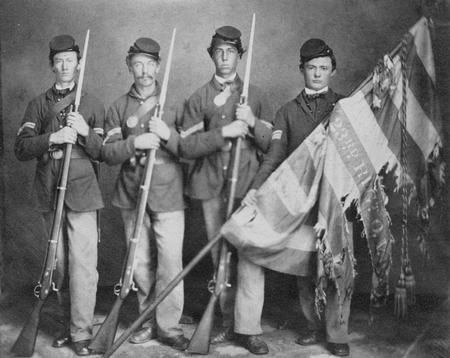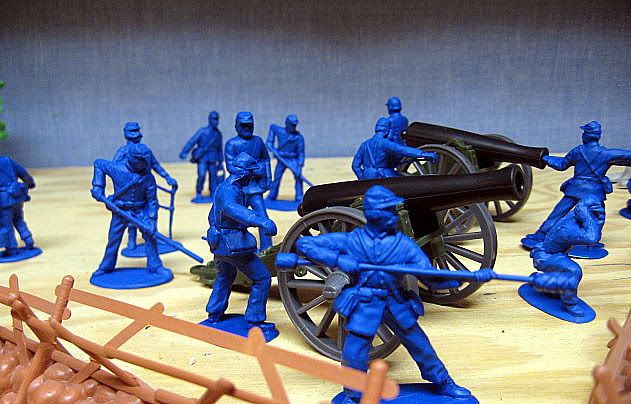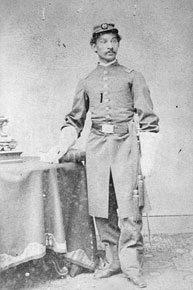 The Detroit Race Riot of 1863 occurred during the American Civil War on March 6, 1863 in the city of Detroit, Michigan. At the time, it was reported as “the bloodiest day that ever dawned upon Detroit.”
The Detroit Race Riot of 1863 occurred during the American Civil War on March 6, 1863 in the city of Detroit, Michigan. At the time, it was reported as “the bloodiest day that ever dawned upon Detroit.” It began due to unrest related to racism and themilitary draft..
It began due to unrest related to racism and themilitary draft..
While not as famous or destructive as riots later in Detroit’s history, the riot of 1863 was certainly a momentous occasion for the city of Detroit. The casualties of the day included at least two innocent people dead, a multitude of others, mostly African-American, mercilessly beaten. 35 buildings were burned to the ground, and a number of other buildings were damaged by fire.

The riot resulted in the creation of a full-time police force for Detroit.March 6, 1863 the Detroit Free Press reported “the greatest excitement” in the
city’s history. The paper labeled that day “the bloodiest day that ever dawned upon
Detroit.” The city had experienced its first race riot. While not as famous or destructive
as riots later in Detroit’s history, the riot of 1863 was certainly a momentous occasion for
the city of Detroit and a historical event worthy of examination. The tallies of the day
included at least two innocent people dead, a multitude of others—mostly AfricanAmerican—mercilessly beaten, 35 buildings burned to the ground, and a number of other

buildings damaged by fire.
For weeks news of the riot and related issues filled the pages of the city’s two
main papers, the Detroit Free Press and the Detroit Advertiser and Tribune. The Free
Press was a Democratic paper, and the Advertiser and Tribune was a Republican paper.
Because of their respective political ideologies, the papers would often use different
angles—and sometimes different facts—when reporting on the same event. It is
impossible to define exactly what it meant to be either a Republican or a Democrat in the
1860s; like modern times, the political ideologies of the Civil War were more a spectrum
than two distinct camps. However, as the two papers represented them, there were some
than two distinct camps. However, as the two papers represented them, there were some
key aspects to the ideologies of each party. The Advertiser and Tribune represented a
Radical Republican view. The paper supported abolition absolutely and black rights to
some extent. The paper supported the war, and most of the time President Lincoln. Its
main criticism of the commander and chief was that he was not radical enough in his
below tree trog
ù
support of emancipation, the use of black soldiers, and African-American
ri
rights in
 general.
general. The Free Press supported the war as well—though not how it was being fought.
This paper did not support Lincoln, and blamed the problems with the war on him and his
administration.
The paper advocated white supremacy in every instance, and supported
The paper advocated white supremacy in every instance, and supported
the war solely for the purpose of sustaining the union, not to end slavery or even to stop
its expansion. As far as the other issues of the day went, the Free Press was much more
pro-labor and pro-working class than the Advertiser and Tribune.
In some ways both papers can be seen as vessels of their respective parties within
the political culture of Detroit. It is important, however, not to treat this representation as
an absolute. The papers were speaking as members of a party, to other members of that
party, but they were not speaking for every member of the party that they represented.
When looking at the events surrounding the riot it is important to keep in mind that the
papers, especially the Free Press, were talking to a group of people that share, for the
 most part, similar beliefs.
most part, similar beliefs. Because of the inherent party conflict between the papers, they did not shy from
attacking each other. After the riot, the Advertiser and Tribune was very critical of city
officials, but the paper reserved its harshest criticism for its competition. On the seventh
of March the Advertiser and Tribune ran a column in part condemning the mob but
mostly accusing the Free Press of “intend[ing] to excite the ignorant and prejudiced
against the negro primarily, and the secondarily against the Republicans….”4
 In the same
In the same issue, the Advertiser and Tribune said, “this is a Free Press mob!” The next day the
paper lead off with the headline: “The Free Press MThe article attempted to prove
“The Nature and Causes of the Riot.” Detroit Advertiser and Tribune.
March 7, 1863, afternoon ed. Kundinger 3
its allegation by citing several passages from the Free Press over the preceding months
that it claimed to have “educated the ignorant mob up to the necessary ferocity.”
Simple perusing of the papers makes it clear that the Free Press was more
interested than the Advertiser and Tribune in stories that attacked African-Americans.
This is neither unique nor surprising when the papers’ party affiliations are taken into
account. However, the Advertiser and Tribune’s accusations that the Free Press
deliberately incited the mob are unique. I will first explain the facts of the riot. Then,
through a study of the Free Press in the months preceding the riot, I will examine the
accusations of the Advertiser and Tribune and any culpability on the part of the Free
Press. While there is no evidence to show that the Free Press purposefully instigated the
mob, it is clear that the paper expressed the same attitudes of hate and prejudice that
 caused the violence on March sixth.
caused the violence on March sixth. The Free Press used blatant racism and stories that tied African-Americans to
incendiary issues to form a racial rhetoric designed to portray blacks as not only inferior,
but also as a threat. The blatant racism—such as jokes about how blacks smell—served
little purpose other than making fun of another race, and doing so in a way that made the
paper’s white readers feel superior. However, the paper also tried to incite fear and anger
in its readers by reporting on hot issues—such as labor, war, citizenship, and morality—
and showing how blacks were a threat to whites, usually of the working class, within
 each of these broader issues.
each of these broader issues. To understand the perceived threat, one must take into account that during this
time period a man’s role was as the head of his household. In this role a man was
supposed to provide for his family, protect his family, and serve as an upstanding citizen.
This role as head of household was so ingrained that even the concept of citizenship was
This role as head of household was so ingrained that even the concept of citizenship was
tied to it; one voted as the leader of his family, not solely for himself. The articles in the
Free Press portrayed threats that at their core can be seen as threats to a man’s role as the
leader of his household. The paper showed blacks as being dangerous to several of the
 functions that men identified as being their roles in life.
functions that men identified as being their roles in life. Before the coverage of the papers can be examined, the facts of the event must be
understood.  Anderson Ruffin Abbott (1837-1913), the son of refugees, became a medical doctor in Toronto. He volunteered in 1863 to serve as a surgeon in the United States Army during the American Civil War. He returned to Toronto after the American Civil War, practised medicine and became a coroner for Kent CountyPres
Anderson Ruffin Abbott (1837-1913), the son of refugees, became a medical doctor in Toronto. He volunteered in 1863 to serve as a surgeon in the United States Army during the American Civil War. He returned to Toronto after the American Civil War, practised medicine and became a coroner for Kent CountyPres
 Anderson Ruffin Abbott (1837-1913), the son of refugees, became a medical doctor in Toronto. He volunteered in 1863 to serve as a surgeon in the United States Army during the American Civil War. He returned to Toronto after the American Civil War, practised medicine and became a coroner for Kent CountyPres
Anderson Ruffin Abbott (1837-1913), the son of refugees, became a medical doctor in Toronto. He volunteered in 1863 to serve as a surgeon in the United States Army during the American Civil War. He returned to Toronto after the American Civil War, practised medicine and became a coroner for Kent CountyPres
No comments:
Post a Comment